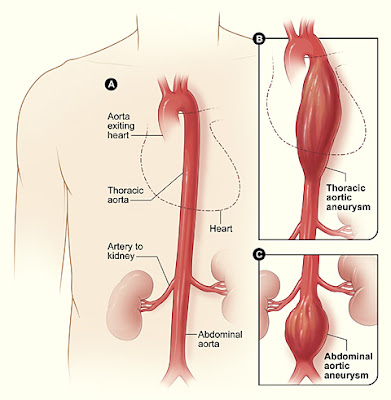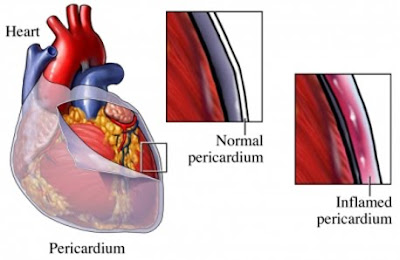
Cardiovascular Disease (CVD) includes dysfunctional conditions of the heart, arteries, and veins that supply oxygen to vital life-sustaining areas of the body like the brain, the heart itself, and other vital organs. If oxygen doesn't arrive the tissue or organ will die. Cardiovascular disease include:
1. Coronary Artery Disease
In general this result because excess fat or plaque deposits are narrowing the veins that supply oxygenated blood to the heart. Excess buildup of fat or plaque are respectively termed arteriosclerosis and atherosclerosis. Equally significant would be inadequate oxygen flow to the brain, which causes a stroke. Arteries are blood vessels that carry oxygen and nutrients from your heart to the rest of your body. Healthy arteries are flexible, strong and elastic.
2. Heart attack
A heart attack is an injury to the heart muscle caused by a loss of blood supply. A heart attack occurs when one or more of the tiny arteries supplying your heart with oxygen-rich blood become blocked.
3. Cardiomyopathy
Cardiomyopathy means diseases of the heart muscle. Cardiomyopathy can be classified as primary or secondary and ischemic or nonischemic
* Primary cardiomyopathy occurs in the absence of other cardiac conditions.
* Secondary cardiomyopathy is caused by a known medical condition (such as hypertension, valve disease, congenital heart disease, or coronary artery disease).
* Ischemic cardiomyopathy is caused by coronary artery disease and heart attacks. Lack of blood damages the heart muscle, causes damage to it, resulting in cardiomyopathy.
* Nonischemic cardiomyopathy includes the four types of heart muscle disease listed below. These forms of cardiomyopathy are not related to coronary artery disease (poor coronary artery blood supply). There are four types of nonischemic cardiomyopathy:
4. Congenital Heart Disease
Congenital heart disease is a type of defect or malformation in one or more structures of the heart or blood vessels that occurs before birth.
The most common congenital heart problems include:
- Heart valve defects. Narrowing or stenosis of the valves or complete closure that impedes or prevents forward blood flow. Other valve defects include leaky valves that don't close properly and allow blood to leak backwards.
- Defects in the walls between the atria and ventricles of the heart (atrial and ventricular septal defects). These defects allow abnormal mixing of oxygenated and unoxygenated blood between the right and left sides of the heart.
- Heart muscle abnormalities that can lead to heart failure.
This diagram of the adult heart illustrates the structures that are affected by congenital heart diseases, with the estimated incidence of each disease per 1,000 live births indicated in parentheses. AC, aortic coarctation; AS, aortic stenosis; ASD, atrial septal defect; AVSD, atrioventricular septal defect; BAV, bicuspid aortic valve; DORV, double outlet right ventricle; Ebstein's, Ebstein's anomaly of the tricuspid valve; HLHS, hypoplastic left heart syndrome; HRHS, hypoplastic right heart; IAA, interrupted aortic arch; MA, mitral atresia; MS, mitral stenosis; PDA, patent ductus arteriosus; PS, pulmonary artery stenosis; PTA, persistent truncus arteriosus; TA, tricuspid atresia; TAPVR, total anomalous pulmonary venous return; TGA, transposition of the great arteries; TOF, tetralogy of Fallot; VSD, ventricular septal defect. (Image courtesy of F. Yeung, University of Toronto, Canada.)
5. Aneurysm
An aneurysm is a bulge or weakness in a blood vessel (artery or vein) wall. An aneurysm is an abnormal bulge in the wall of an artery. Normally, the walls of arteries are thick and muscular, allowing them to withstand a large amount of pressure. Occasionally, however, a weak area develops in the wall of an artery. This allows the pressure within the artery to push outwards, creating a bulge or ballooned area called an "aneurysm."
There are two major types of aneurysms:
a. Aortic aneurysms can occur in two main places:
b. Cerebral aneurysm, which occur in an artery in the brain.
Aneurysms may be caused by:
* Atherosclerosis, or hardening of the arteries, which weakens arterial walls
* Hypertension (high blood pressure)
* Local injury to the artery
* Congenital abnormality. A number of conditions, such as Marfan syndrome are present at birth and can cause weakness of the artery walls.
* Aging
* Syphilis use to be a common cause of thoracic aneurysms, but that is no longer as common.
6. Valvular Heart Diseases
Valvular heart disease occurs when your heart's valves do not work correctly.
Your heart valves lie at the exit of each of your four heart chambers and maintain one-way blood flow through your heart. The four heart valves make sure that blood always flows freely in a forward direction and that there is no backward leakage.
Blood flows from your right and left atria into your ventricles through the open mitral and tricuspid valves.
Valve disease can be congenital (present at birth) or may be acquired later in life. The Types of Valve Disease:
- Valvular stenosis. This occurs when a valve opening is smaller than normal due to stiff or fused leaflets. The narrowed opening may make the heart work very hard to pump blood through it. This can lead to heart failure and other symptoms . All four valves can be stenotic (hardened, restricting blood flow); the conditions are called tricuspid stenosis, pulmonic stenosis, mitral stenosis or aortic stenosis.
- Valvular insufficiency. Also called regurgitation, incompetence or "leaky valve", this occurs when a valve does not close tightly. If the valves do not seal, some blood will leak backwards across the valve. As the leak worsens, the heart has to work harder to make up for the leaky valve, and less blood may flow to the rest of the body. Depending on which valve is affected, the conditioned is called tricuspid regurgitation, pulmonary regurgitation, mitral regurgitation or aortic regurgitation.
7. Pericardial Diseases
Pericardial disorders include inflammation (pericarditis), fluid accumulation (pericardial effusion) and stiffness (constrictive pericarditis). The pericardium is a thin fibrous membrane sac that surrounds the heart.
The pericardium consists of:
- An inner layer (visceral pericardium) – envelopes the entire heart
- An outer layer (parietal pericardium) – the outer fibrous sac
- A middle fluid layer – a small amount of fluid lies between the two layers to prevent friction between the two surfaces. Pericarditis is inflammation of any of the layers of the pericardium.
Pericarditis can be caused by:
- After heart surgery
- Infections
- After a heart attack
- Trauma
- Tumors
- Cancer
- Radiation
- Auto-immune diseases (such as rheumatoid arthritis, lupus, or scleroderma)
- No cause may be found
8. Heart failure
Heart failure, often called congestive heart failure, is a condition in which the heart can't pump enough blood to meet the needs of your body's organs and tissues. The "poor pump" is unable to keep up with the body’s constant need for oxygen and nutrients during heart falure. In response:
- the walls of the heart stretch to hold more blood
- the heart muscle walls thicken to pump more strongly.
- the kidneys cause the body to retain fluid and sodium. This increases the amount of blood circulating through the heart and blood vessels.
- your body tries to compensate by releasing hormones that make the heart work harder. Over time, these compensatory mechanisms fail and symptoms of heart failure begin to appear. Like an over-stretched rubber band, the heart’s ability to stretch and shrink back decreases. The heart muscle becomes over-stretched and is unable to pump blood effectively.
Blood backs up into the arms, legs, ankles, feet, liver, lungs or other organs; the body becomes congested. This is called congestive heart failure.
Heart failure is most often caused by:
- coronary artery disease
- cardiomyopathy
- Conditions that overwork the heart: high blood pressure (hypertension), valve disease,
thyroid disease, kidney disease, diabetes mellitus or heart defect
9. High Blood Pressure
High blood pressure (hypertension) is the excessive force of blood pumping through your blood vessels. High blood pressure also causes many other types of cardiovascular disease, such as stroke and heart failure.
10. Stroke
A stroke occurs when blood flow to the brain is interrupted (ischemic stroke) or when a blood vessel in the brain ruptures (hemorrhagic stroke). Both can cause the death of brain cells in the affected areas. Stroke is also considered a neurological disorder because of the many complications it causes. Other forms of cardiovascular disease, such as high blood pressure, increase your risk of stroke.
11. Peripheral Arterial Disease and Claudication
Also known as peripheral vascular disease, atherosclerosis or hardening of the arteries -- is a disorder that occurs in the arteries of the circulatory system. Peripheral arterial disease is a disorder in which the arteries supplying blood to your limbs — usually your legs — become narrowed or blocked. When this happens, your legs receive less blood than they need to keep up with demand. Claudication may then develop. When the obstruction is mild, you may have such symptoms as pain in your legs only during strenuous exercise. As the disease progresses and arteries become more obstructed, you may have pain or cramping in your legs even at rest.
Other symptoms of advanced peripheral artery disease may include:
* A burning or aching pain in the feet and toes while resting, especially at night while lying flat
* Cool skin in the feet
* Redness or other color changes in the skin
* Increased occurrence of infection
12. Arrhythmia or Abnormal Heart Rhythms
An abnormally high or abnormally low heart rate. Heart rhythm problems (arrhythmias) occur when the electrical impulses in your heart that coordinate your heartbeats don't function properly, causing your heart to beat too fast, too slow or irregularly. Other forms of cardiovascular disease can cause arrhythmias.
Arrhythmias may be caused by many different factors, including:
- Coronary Artery Disease
- Electrolyte imbalances in your blood (such as sodium or potassium).
- Changes in your heart muscle.
- Injury from a heart attack.
- Healing process after heart surgery.
Heart-Healthy Diet
A heart-healthy diet is a diet high in vitamin C , low in sodium, cholesterol, and fat. Foods that best meet these requirements are whole grains, fruits, and vegetables. A diet high in sodium, fat and cholesterol is associated with higher blood pressure, increased weight, and elevated blood cholesterol levels, all of which increase the chances that atherosclerosis will occur. Vitamin C helps to regenerate Vitamin E. Beta-carotene was shown to increase the risk of heart disease in a controversial study involving smokers, but for non-smokers the evidence is less ambiguously in favor of reduced risk. The Vitamin B Complex 50 promotes energy metabolism. Cayenne increases blood circulation. N-Acetyl L-Cysteine, L-Glutathione Reduced, Vitamin C and Selenium work together in absorbing free radicals from the system. Hawthorn is beneficial for the heart system.
Eaten Less Salt Can Reduce Cardiovascular Problem
People who significantly cut back on the amount of salt in their diet could reduce their chances of developing cardiovascular disease by a quarter.
Researchers in Boston also found a reduction in salt intake could lower the risk of death from cardiovascular disease by up to a fifth.
While there is already a substantial body of evidence showing that cutting back on salt lowers blood pressure, studies showing subsequent levels of cardiovascular disease in the population have been limited and inconclusive.
This research provides some of the strongest objective evidence to date that lowering the amount of salt in the diet reduces the long term risk of future cardiovascular disease, say the authors of the report.
The reduction in the risk of developing cardiovascular problems as a result of the sodium reduction intervention was substantial.
Soluble fiber has been shown to lower blood cholesterol. The pectin in apples, pears, oranges, grapefruit and bananas is soluble fiber; as is the glucan in oat bran, peas, beans and whole wheat spaghetti; and as is the psyllium in the laxative Metamucil.
The Omega-3 fatty acids lower blood triglycerides, but their main benefit for preventing heart disease by being a precursor of prostaglandin, which inhibits platelet aggregation and dilates blood vessels. Although these fatty acids are present in fish, the richest source is linseed (flaxseed) oil, which is 55% linoleic acid.
Magnesium may regulate heart rhythm and reduce blood clots
Sunday, May 6, 2007
Types of Cardiovascular Disease | Cardiovascular Disease and Healthy Diet
Posted by
Feliciana
at
6:39 AM
![]()
![]()
Labels: Aneurysm, Arrhythmias, Cardiomyopathy, Cardiovascular Disease, Congenital Heart Disease, Coronary Artery Disease, Heart failure, Pericardial Diseases, Peripheral Arterial, Valvular Heart Diseases
Subscribe to:
Post Comments (Atom)












No comments:
Post a Comment